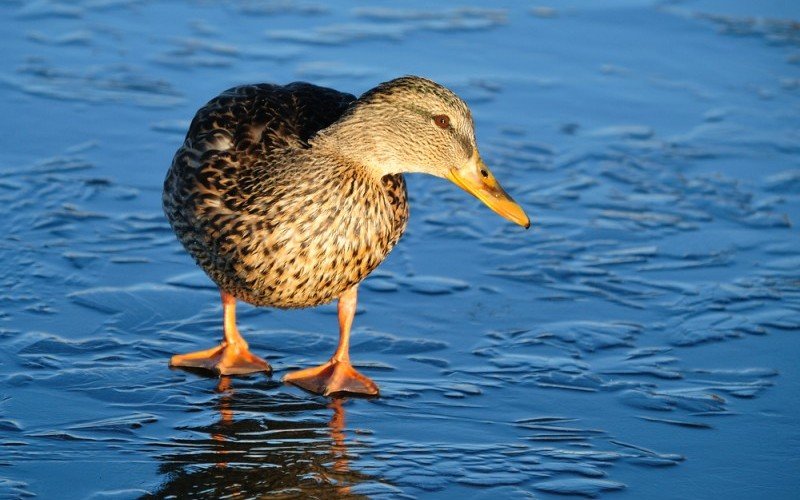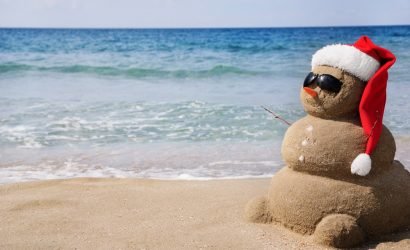Weather report in from ShoreBread–in case you haven’t left your home since the polar vortex first descended upon the Shore, our coastal waterways are looking more like ice blocks than liquids these days. The slushy build up on our Bay and rivers is beginning to look like the deep freeze of 1976- 77 when everything on the Eastern Shore was locked in ice. The cold snap of that winter stopped watermen from working, causing oyster prices to shoot up to $10 per bushel, Smith Island and Tangier Island were completely frozen for nine weeks and President Carter declared Maryland and Virginia to be disaster areas. With all of our current cold weather blasts, we wondered how it was possible for our expansive, salty waterways to turn into ice bergs.
Our Chesapeake Bay, as most of us know, leads right into the Atlantic, and as a result, has a high salinity percentage. The Bay is also fed by fresh water rivers and streams which help to dilute the salt in the water. As a result, the Chesapeake Bay is considered a brackish body of water. When freezing conditions occur, the denser salt water molecules sink to the bottom of the water and the molecules containing less salt rise to the surface. Because saltwater freezes at a lower temperature than freshwater this allows the top layer to freeze while the water underneath continues to flow.
We couldn’t help but wonder…how is the wildlife affected by this ice? Do fish run out of oxygen? And all those geese flocking to the area, how do they stay warm floating in that frigid water? Aren’t their feet cold?
Luckily, we found the answers to our pressing nature questions as well. Most of the time, the ice does not disturb wildlife in the water. In severe cases only, the ice can become so thick that it comes in contact with plant life on the bottom and can choke out eel weed, a main provider of oxygen to the watershed. This same aquatic plant is what provides oxygen for fish and other animals to breathe while stuck underneath the ice. However, the flowing water from upstream also delivers oxygen to the aquatic life.
Fish have special ways to survive while not freezing their fins off. While encased beneath the ice, fish live near the bottom of the water where the temperature is warmer than above. Here, they maintain slow, lethargic movements, similar to hibernation, to keep from getting cold. They will slowly swim behind rocks or logs to avoid currents and fast moving water. Because fish are cold blooded and do not have a central body heating system, they must adapt to the cold by using these unconventional methods of survival.
The waterfowl that float above on ice or in chilly water also have ways to protect themselves from the temperatures. The first weather-protector that ducks and geese have is their down and outer feathers. Most birds that live near the water have water proof feathers that act like a rain jacket as the water rolls off the bird and keeping it dry. The down feathers of birds act like thermal underwear and insulate the bird for extra warmth.
Now about those webbed feet… There has been research done about how birds keep their toes from freezing off and some birds have better luck at this than others. For example, most waterfowl do not succumb to frostbite, however birds like the mourning dove do lose toes as a result of the cold. One way that birds warm their feet is by standing on one foot and bringing the other close to the body in order to warm it up. Sometimes if you see a goose sitting on the ground, it is keeping both of its feet warm by bringing them in contact with its feathery body. Birds’ feet also use counter circulation of blood flow to keep their feet and legs from freezing. This means that veins in this area are located very close to each other so that the veins containing the cold blood leaving the foot and the veins with warm blood coming from the heart remain around the same temperature allowing the bird to stay warm.
There has also been research into the actual tissue of these body parts. Scientists know that there is very little soft tissue on this part of the bird and that this also reduces the chance of frostbite. Objects that are non-living, such as hair, also cannot be frostbitten. Because of this, some scientists believe that the scaly tissues on the birds’ feet are non-living as well. If this outer layer of the waterfowl is not alive, it would also explain why the bird may not be able to feel discomfort from standing on the ice; simply because it does not have feeling in that area.
Amidst all the frigidness, both in the ‘76-‘77 winter and today’s vortex, we did hear about a lot of fun that people on the Shore have had in the sub-zero temperatures. Of course there was the famed walking across the Bay on the hard ice and a lack of school that had many children up to “snow good”. But we also heard a rumor during the past deep freeze where a relative of a ShoreBread member was caught skating across Assawoman Bay, but in no usual manner. This person used bed sheets as a parasail to blow her around the frozen water. Whatever creative craziness you think up to stay entertained, make sure to be safe while having fun out in the cold!







